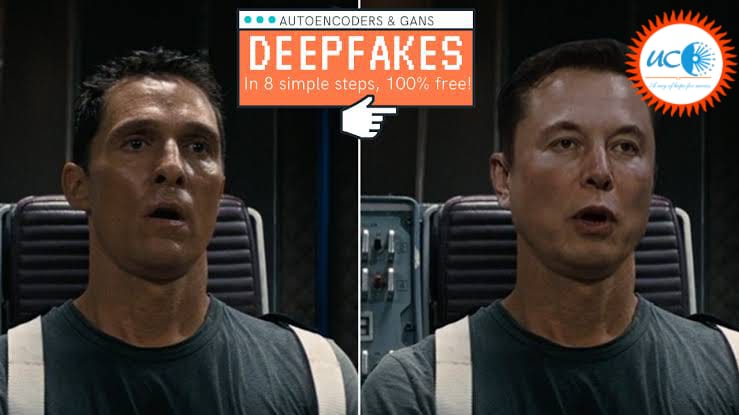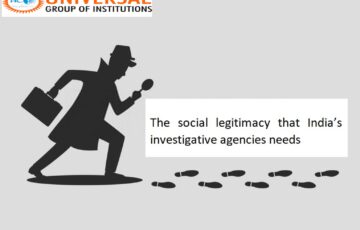Deep Fakes present an opportunity to the cyber-criminal and a challenge to everyone else. Discuss
Approach
- Start your answer by briefly explaining deep fake technology.
- Discuss its challenges of deepfake technology.
- Suggest some measures to overcome challenges of deepfake technology.
- Conclude accordingly.
Introduction
Deepfake technology uses powerful computers and deep learning to manipulate movies, pictures, and audio files.
Among other wrongdoings, it is used to fabricate news and commit financial fraud.
Cybercriminals utilise artificial intelligence to overlay a digital composite over an already-existing video, photograph, or audio.
Body
Deepfake technology is now being used for nefarious purposes like scams and hoaxes, celebrity pornography, election manipulation, social engineering, automated disinformation attacks, identity theft and financial fraud etc.
Challenges of Deepfake Technology:
- Cybercrime: Deepfakes could be used in phishing efforts to make it harder for victims to recognise the scams as such.
- A phoney video of a famous person, for instance, could be used in social media phishing to demand money from naïve victims.
- Fabricated Media: Deep Fake technology allows for the fabrication of media, such as swap faces, lip-syncing, and puppeteers, frequently without the subject’s knowledge or agreement, endangering psychological well-being, national security, political stability, and economic viability.
- The former presidents of the United States Barack Obama and Donald Trump, the prime minister of India Narendra Modi, and other well-known figures have all been impersonated using deepfake technology.
- New Front of Warfare: A nation-state might use a deepfake as a potent weapon to compromise public safety and sow unrest and confusion in the target nation.
- Deepfakes can be used to skew media narratives by nation-state entities with geopolitical ambitions, ideological convictions, violent extremists, and commercial interests.
- It can be used by terrorist organisations and rebel groups to portray their opponents as making incendiary statements or acting provocatively to incite anti-state feelings among the populace.
- Undermining Democracy: A deepfake can also help to skew democratic discourse, erode public confidence in institutions, and damage diplomatic relations.
- A deepfake can be used to spread false information about organisations, laws, and politicians in order to skew the narrative and influence public opinion.
- Interfering with electioneering
- A political candidate’s reputation and image can be ruined by a deepfake. A well-executed video of a political candidate using racist slurs or engaging in unethical behaviour a few days before voting can harm their campaign.
- A well-crafted deepfake can introduce persuading false material that casts doubt on the validity of the voting process and the outcome of the election.
- They can also be used by leaders to strengthen their hold on power and boost populism.
- Deepfakes have the potential to be a very powerful weapon for sowing the seeds of polarisation, intensifying social divide, and stifling dissent.
Measures to Overcome Challenges of Deepfake Technology:
- For both consumers and journalists, increasing media literacy is the strongest defence against deep fakes and misinformation.
- Media literacy needs to be increased before dealing with the problems that deepfakes provide.
- Initiatives to promote media literacy must be strengthened in order to create an informed public.
- As media consumers, they must be able to decipher, understand, translate, and apply the information.
- Even a quick media knowledge intervention that explains the context and reasons can lessen the harm.
- Rules that are necessary Meaningful regulations that are the result of cooperation between the policymaking community, the technology industry, and civil society can aid in preventing the creation and spread of hazardous deep fakes.
Technological Interventions: There is also a need for easy-to-use and accessible technology solutions to detect deep fakes, authenticate media, and amplify authoritative sources.
Behavioural Change: On the part of society, to counter the menace of deep fakes, there is a need to take the responsibility to be a critical consumer of media on the Internet, think and pause before sharing on social media, and be part of the solution to this infodemic.
Conclusion
- We must be able to interpret, comprehend, translate, and utilise the information we come across as media consumers.
- Using technological solutions backed by artificial intelligence that can detect and block deep fakes is the best way to handle this issue.
- Prior to addressing the problems caused by deep fakes, media literacy needs to be raised.
- It is necessary to establish a cyber arm that would focus on combating these kinds of novel and emerging dangers.
- In order to identify deep fakes, verify media, and magnify reliable sources, technology solutions that are simple to use and widely available are also required.
On the part of society, to counter the menace of deep fakes, there is a need to take the responsibility to be a critical consumer of media on the Internet, think and pause before sharing on social media, and be part of the solution.








